If you plan to retire in Canada, you would want to spend the rest of your days in a relaxing, affordable and safe province.
Before deciding on a location, determine if it is a good fit for you by doing your due diligence.
In this article, learn about the worst places to live in Canada due to the weather, cost of living, quality of life, safety and more.
Key Takeaways
- Some of the worst places to live in Canada include Timmins (ON), Thompson (MB), North Battleford (SK), Lethbridge (AB), Kenora (ON) and Brooks (AB).
- High crime rates, harsh weather, and a high cost of living are among the reasons that make a place unsuitable for retirement.
- The best places to retire in Canada are safe, have a high quality of life and affordable cost of living, and provide plenty of things to do for retirees.
Worst Places to Retire and Live in Canada
Listed below are some of the worst places to live in Canada. Population data is from the 2021 Census of Population from Statistics Canada. Figures from the Crime Severity Index (CSI), which measures the overall seriousness of crime, are from the Canada Crime Index.
1. Sarnia, Ontario
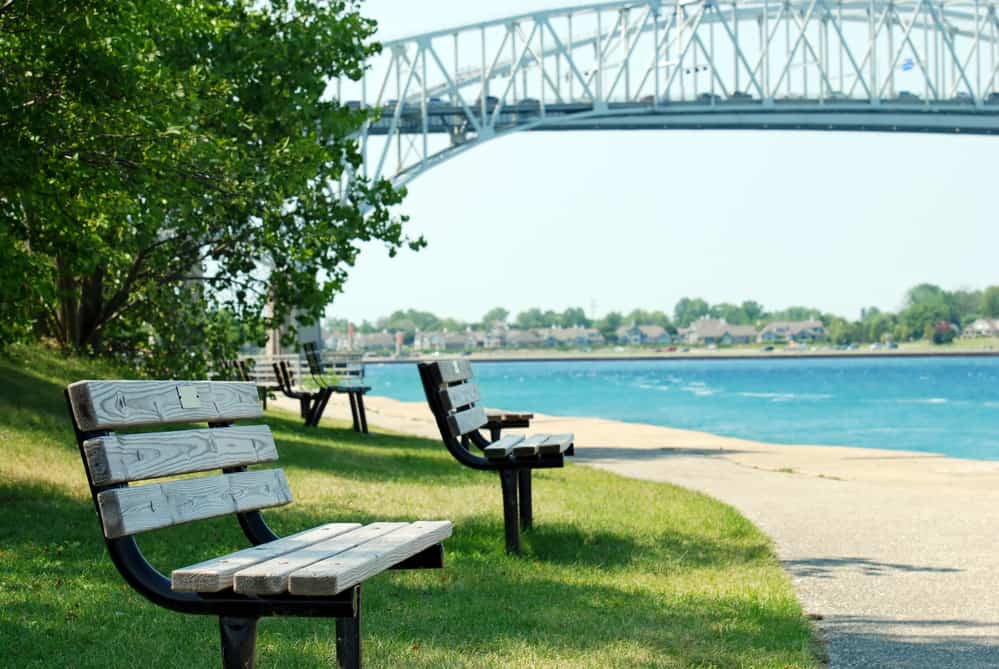
The City of Sarnia, with a population of 72,047, is the largest in Lambton County in Southwestern Ontario. The city offers outdoor activities like watersports, camping and fishing.
The cost of living (without rent) is C$1,320 for a single person and C$4,676 for a family of four.
Winters in Sarnia are relatively mild, with occasional cold weather blasts. Summers are warm with high humidity levels.
What makes it one of the top 10 worst places to live in Ontario is the “Chemical Valley,” a slew of refining and chemical companies located south of downtown.
While the industry is crucial to the city’s economy, it contributes to major pollution and poor air quality.
2. Thompson, Manitoba
Thompson, in north-central Manitoba, is 130 miles north of Lake Winnipeg. It has a population of 13,035.
Once coined the “Hub of the North,” it is ideal for outdoor lovers who prefer golfing, mountain biking, watersports and ice fishing.
The average cost of living in Thompson is $3,066/month for a single person who rents. This can be considerably costly for retirees looking for affordable options.
Another reason it is not ideal for retired seniors is that it is one of the most dangerous cities in Canada.
It has a violent CSI of 570 compared to the average figure of 82. Drug trafficking and other criminal activities are common in the area.
The city also does not have the best weather. Winters can be long, cold and harsh, with snow lasting from early October until May. January is the coldest month, while July is the hottest.
Related: Best Places To Live in Manitoba
3. Dolbeau-Mistassini, Québec
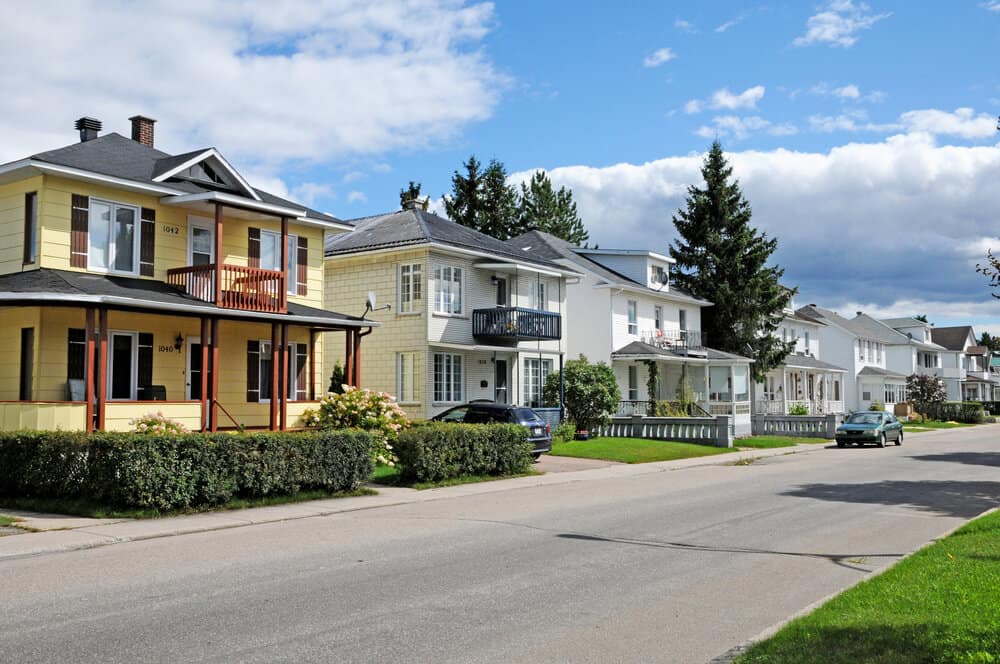
Dolbeau-Mistassini is a northern Québec town located about 497 km from Montréal and 304 km from Québec. It has a population of 13,718 and is known for its blueberry festival.
The cost of living in the province is affordable, with its inexpensive rental rates and competitively-priced housing market. It is also one of Canada’s cheapest provinces to live in.
Dolbeau-Mistassini is near Lac-Saint-Jean and other rivers, making it appealing for outdoor lovers who enjoy kayaking, swimming, golfing, hiking, and biking.
There are several reasons why the city is on this list. Although the summers are mild here, the winters can be cold. The city is also isolated, being a six-hour drive away from Montréal.
Additionally, while the town’s paper mill industry is the main source of employment, it is also a great source of pollution and stink.
4. St. John’s, Newfoundland
St. John’s is the capital city of Newfoundland and Labrador, with a population of 110,525. It is known for its colourful row houses and multi-coloured homes.
The average cost of living in St. John’s without rent is around C$1,410 for a single person and C$4,970 for a family of four.
The city is popular for activities, including visiting historic sites and parks, hiking, ziplining, camping, boating, and whale watching.
St. John’s climate is unsuitable for retirees as winters are often dreary and can last until June. The city is also among the cloudiest, windiest and foggiest in Canada.
5. Bay Roberts, Newfoundland
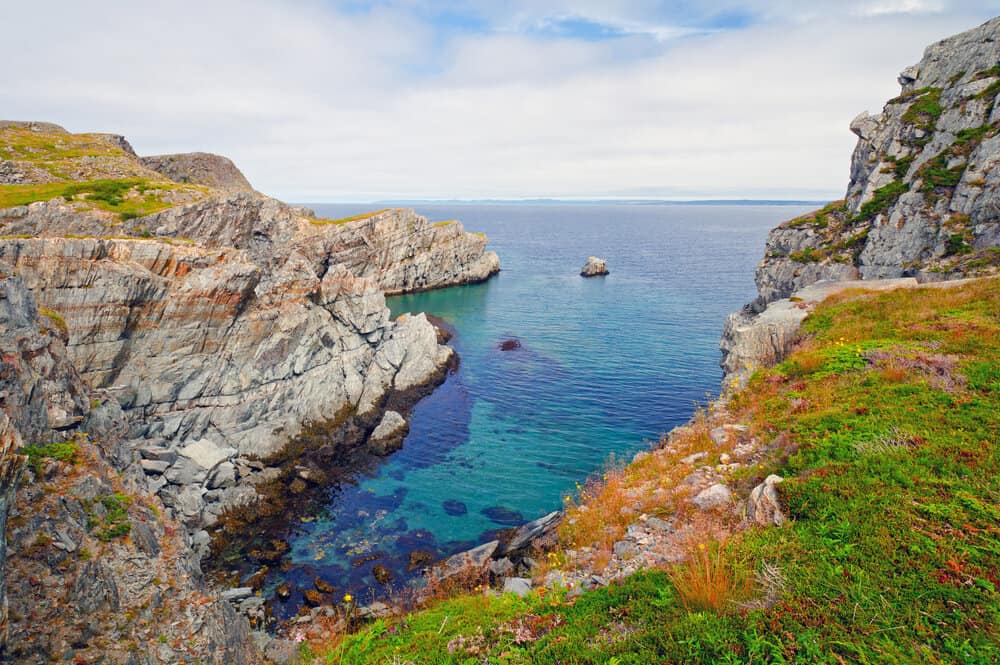
Bay Roberts in Newfoundland is located in the north-western quadrant of the Avalon peninsula and about one hour west of St. John’s, the provincial capital. Bay Roberts has a population of 5,974.
The cost of living in the province is $2,131 for one person and $5,124 for a family of four. Attractions in the city include boating, whale watching, parks and zoos, golfing, and outdoor sports.
What makes the city a less-than-ideal retirement place is the weather, specifically its winters, which are long, snowy and freezing.
The cold season lasts nearly four months, from December to March, with February being the coldest month.
6. North Battleford, Saskatchewan
North Battleford is a city in west-central Saskatchewan located around 140 km northeast of Saskatoon. With a population of 13,836, the city is the seventh largest in the province.
The average cost of living in this city is $3,138 per month for a single person who rents. It is ideal for outdoor activities like golfing, boating, fishing, and swimming as well as skiing and snowboarding during winter.
The city’s very high CSI index of 332.8, among the highest in the country, made it an unfavourable retirement place.
Addiction, poverty and mental illness are among the reasons for the many crimes. Additionally, the city has very harsh winters, while summers are hot and humid.
7. Brooks, Alberta
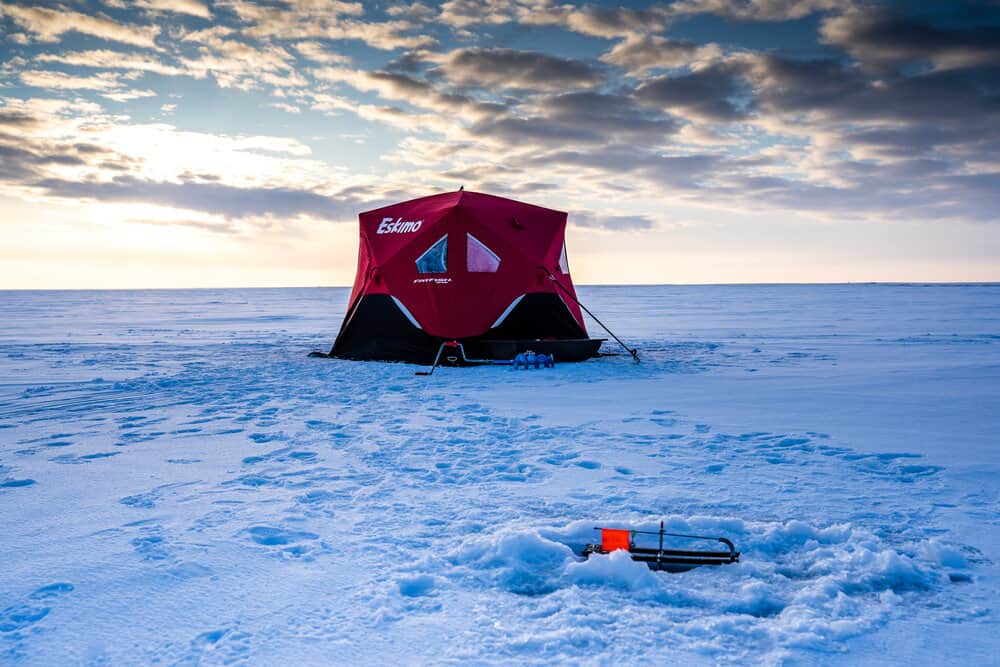
Brooks is a city located in southeast Alberta, approximately 186 km (116 mi) southeast of Calgary. With a population of 14,924, Brooks is known as the “City of 100 Hellos.”
Things to do in Brooks include golfing, camping, picnicking, sightseeing, birdwatching, swimming, canoeing, boating and water skiing.
The cost of living in the city is $3,144 per month for a single person who rents. The average monthly cost of rental housing here is $1,292.
Summers in Brooks are warm, but winters are freezing, snowy and windy. The cold season lasts three months, from November to February.
With its expensive living costs and cold winters, Brooks is not highly recommended for retirees.
8. Vaughan, Ontario
Vaughan, Ontario, a city located about 40 km north of Toronto, is the fifth-largest city in the Greater Toronto Area, with a population of 323,103.
The city features include parks, trails and greenspaces for people who love doing activities like swimming, skating and biking.
The average cost of living per month in Vaughan is $3,110 per month for a single person who rents. This can be expensive for retired individuals who prefer to live simply.
The weather is one other reason why the city is not a perfect retirement location. Winter in Vaughan is characterized by freezing temperatures and heavy snowfall.
And, since Vaughan is near Toronto, it is prone to heavy traffic and can become busy during peak hours.
9. Kenora, Ontario
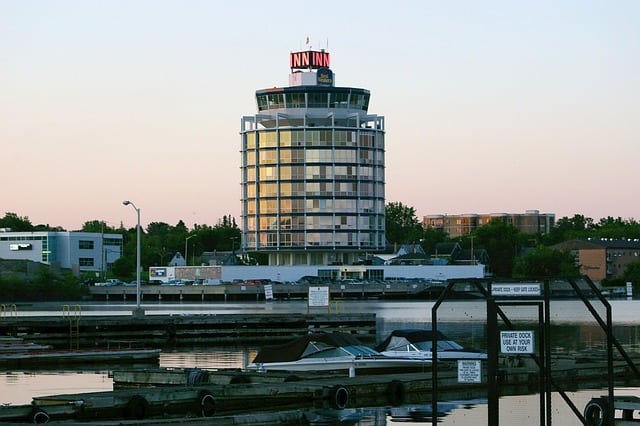
Kenora, formerly Rat Portage, is located on Lake of the Woods in Ontario, about 210 km east of Winnipeg. Its population as of the 2021 Census is 14,967.
Its popular activities include cruises, swimming, and open water and ice fishing. For the cost of living, a single person living in Kenora is $2,882 per month, while rental housing costs are $1,292 monthly.
The city, with its humid continental climate, has warm summers and cold and dry winters.
One major drawback of this place is that the nearest city is five hours away.
Another reason Kenora is among the worst places to retire in Canada is the cold and snowy weather that lasts nearly the entire year.
10. Thetford Mines, Québec
Thetford Mines in Québec, with a population of 17,046, is located in the Appalachian Mountains, 141 miles northeast of Montréal and 107 km south of Québec City.
The city offers various activities, from festivals to golfing, hiking, in-line skating, and cross-country skiing. For retirees, there are not many senior-specific activities to enjoy.
The average monthly cost for a single person renting a place in the area is $3,001 per month, which can be quite high for retirees seeking affordability.
In addition, although Thetford Mines has warm and rainy summers, winters in the city are very cold and snowy. This may not be ideal for retirees looking for a warm and sunny climate.
11. Hawkesbury, Ontario
Hawkesbury is a small city in eastern Ontario with a population of 10,194. It is situated between Ottawa, Cornwall and Montreal.
Compared to Ontario’s larger cities, Hawkesbury has a significantly more affordable cost of living, with housing prices and basic goods being less expensive than in bigger cities.
Things to do in the city include golfing, mountain biking, camping, cross-country skiing, snowshoeing, rafting and water activities on the Ottawa River watercourse.
In Hawkesbury, summers are long and comfortable, but winters are snowy and freezing, making the city less-than-accommodating for retirees looking for a cozy place.
While the violent crime severity rate in the city has decreased from the previous year, the latest rate of 100.7 is still considerably high.
12. Leamington, Ontario
Leamington is a small town in the southwestern part of Ontario, particularly in Essex County. Situated on the shore of Lake Erie, it has a population of 29,680.
The city is among the more affordable places in Ontario, where the cost of living is $1,695 per month, with the average house rent at $1,237.
Leamington offers various activities and things to do, such as boating, fishing, canoeing, hiking, biking and bird watching.
December through February can be very cold, while summers can be very hot since the city is in the southernmost part of Canada.
These climate conditions can be an issue for retired seniors who want to enjoy their retirement days.
13. Lethbridge, Alberta

Lethbridge is a city in Alberta with a population of 98,406. It is southern Alberta’s financial, commercial, industrial and transportation hub.
Among Lethbridge’s things to do are hiking, stargazing, horse racing, berry picking and attending festivals.
The monthly cost of living for a single person in Lethbridge is C$1,462 on average, while a family of four can expect to spend about C$5,160.
Lethbridge is the eleventh driest city in Canada with its semi-arid climate. It is also a windy place with warm summers and mild winters.
A chief reason why Lethbridge is one of the worst places to retire is its high CSI rate of 134.7. Its violent CSI is also very high (130.4) as well as its non-violent CSI (137.6).
14. Timmins, Ontario
Timmins is the fourth-largest city in Northeastern Ontario, with a population of 28,874. It is approximately two hours from the Quebec border and three hours north of Sudbury.
Things to do in the city include hiking, mountain biking, wakeboarding, wildlife tours, kayaking, and fishing.
The city has an affordable living cost compared with other Ontario communities. The cost of living with rent is $1,931 for one person and $4,708 for a family of four.
The place has very cold winters, with autumn and late summer tending to have some of the coldest temperatures in Canada. Spring and summer temperatures can rise significantly.
A discouraging statistic that classified Timmins among the top 10 worst places to live in Ontario is its CSI.
Timmins ranks highly at 148.5, making it one of the most dangerous cities in Canada. Violent CSI and non-violent CSI figures are both high at 192.4 and 132.1, respectively.
Related: Best Places To Live in Ontario.
15. Campbellton, New Brunswick

Campbellton is a small city in Restigouche County in New Brunswick with a population of 11,986. It is known worldwide for its salmon fishing.
The city’s background, Sugarloaf Provincial Park, provides a range of adventures, such as
hiking, camping, mountain biking, fishing and kayaking.
The cost of living in the city is $3,445 per month for a single person who rents. The average monthly cost of rental housing is $1,292.
The average climate in the city is wet, cold and snowy. Summers are comfortable and partly cloudy, while winters are freezing.
What Makes These the Worst Places to Retire?
While Canada is one of the safest places to live on the planet, there are cities here classified as the worst places to retire in due to high crime rates and crime severity.
Even with the positive side of the above-mentioned cities and towns, they have qualities that currently categorize them as the worst places to live in Canada.
Many of these cities have consistently been ranked in the list of places with some of the highest crime rates and the most severe crimes committed.
Among the cities on this list, the top four with the highest crime severity rates are as follows:
- Timmins, ON – 148.5
- Lethbridge, AB – 134.7
- Kenora, ON – 128.9
- Brooks, AB – 98.8
Apart from the high CSI, many of the cities mentioned above have a high cost of living and are expensive to live in.
The cities ranked here also have some of the coldest winters and the hottest summers. Additionally, there are fewer things to do in many of these places than in other cities.
All of these contribute to making them less than ideal places for retirement.
What Are the Best Places to Retire in Canada?
Where should I retire in Canada?
This is a common question for anyone planning to retire in Canada. The country is widely known as one of the best places to live in due to various reasons, including a robust economy, high quality of life, and superior education.
For the best places to retire in Canada, refer to this list and the diverse selections presented. Included in the list are:
- Victoria, British Columbia
- Vancouver, British Columbia
- Halifax, Nova Scotia
- Kelowna, British Columbia
- Ottawa, Ontario
A place is considered perfect for retirement due to various reasons, including:
- A safe place to retire with low crime rate
- High quality of life
- Bustling, laid-back and affordable lifestyle
- Affordable cost of living
- Low property taxes
- Mild climate and temperate weather
- Plenty of attractions and things to do
The best places to live in Canada may also be expensive. This is why it is sensible to determine your budget, decide on what you want and do research to come up with the ideal place for your retirement days.
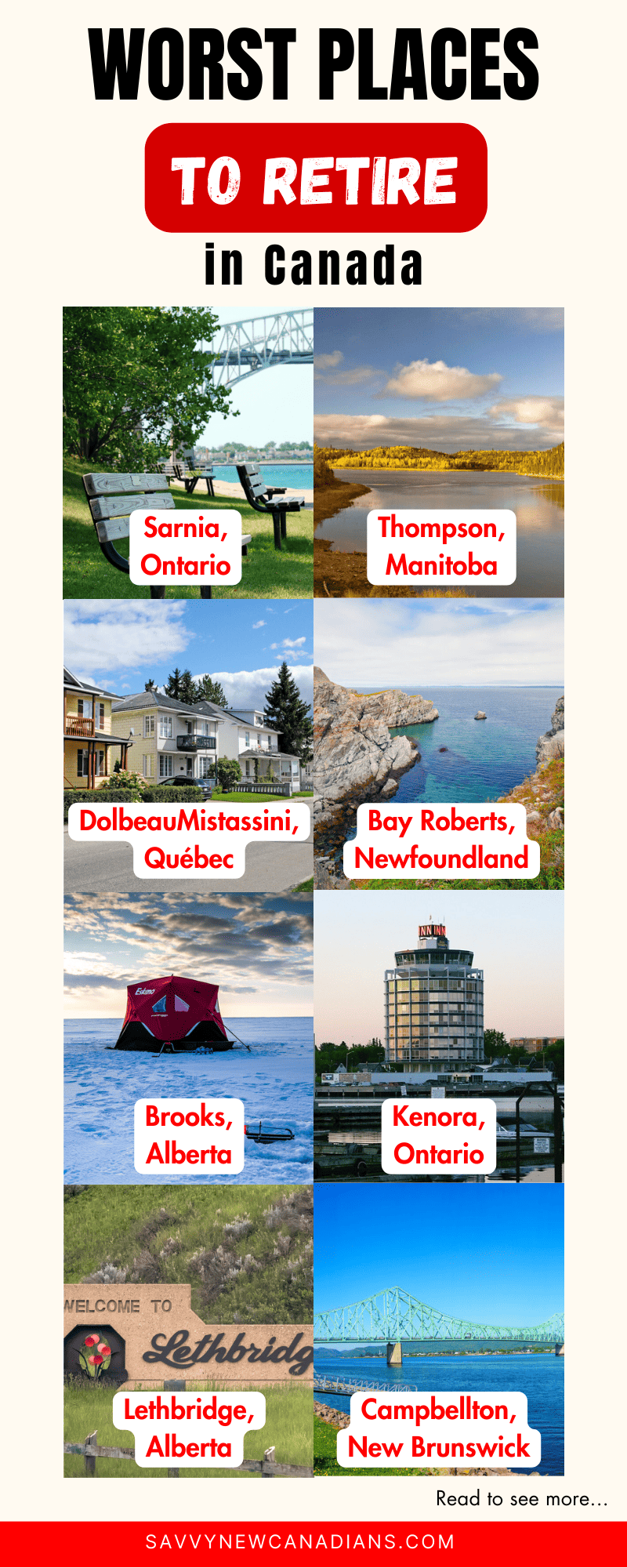
FAQs
British Columbia is the best province to retire in as it has plenty of options for retirees, from quiet towns by the sea to a busy city with lots of activities. Many cities in BC are constantly ranked high in surveys of the best retirement places. These include Vancouver, Victoria, Surrey and Burnaby.
Saint John, New Brunswick, is the cheapest place to retire in the country. It has a low cost of living, affordable housing, the lowest real estate prices, low property taxes, a robust economy and a moderate climate. It is also one of the safest cities to live in the country, with a low CSI rate.
To retire in Canada, you may need 70-80% of your current salary and maintain the lifestyle you are used to. It is estimated that an average Canadian couple nearing retirement has a total retirement savings of around $800,000 to $810,000, while individuals are assumed to have $445,000 to $450,000.
British Columbia is the best province if you want the best quality of life. It has the mildest weather, and the temperatures are more manageable than in other provinces. It also offers high living standards, education and healthcare.
Related: Worst Places to Live in Alberta



